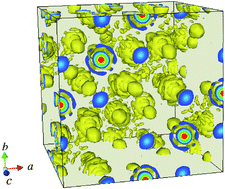Synthesis, structure, and phase relationship in lithium manganese oxide spinel†
Abstract
Phase relationships, structures, magnetic properties, and phase transitions in the lithium manganese oxide spinel were studied based on a wide variety of samples synthesized at temperatures over a range of 750 ≤
t
≤ 900 °C with Li/Mn ratios between 0.5 and 0.55 and various starting materials. The system was divided into three categories: oxygen deficient spinels, LiMn2O4 −
− δ; lithium-substituted spinels, Li1
δ; lithium-substituted spinels, Li1 +
+ xMn2
xMn2 −
− xO4
xO4 −
− δ; and the stoichiometric spinel, LiMn2O4. Their structures were discussed based on the
δ; and the stoichiometric spinel, LiMn2O4. Their structures were discussed based on the  −
− δ, for example, for the spinel synthesized at 900 °C, and the nearly stoichiometric composition was obtained at 750 °C followed by heating at 470 °C for several times from
δ, for example, for the spinel synthesized at 900 °C, and the nearly stoichiometric composition was obtained at 750 °C followed by heating at 470 °C for several times from


 Please wait while we load your content...
Please wait while we load your content...